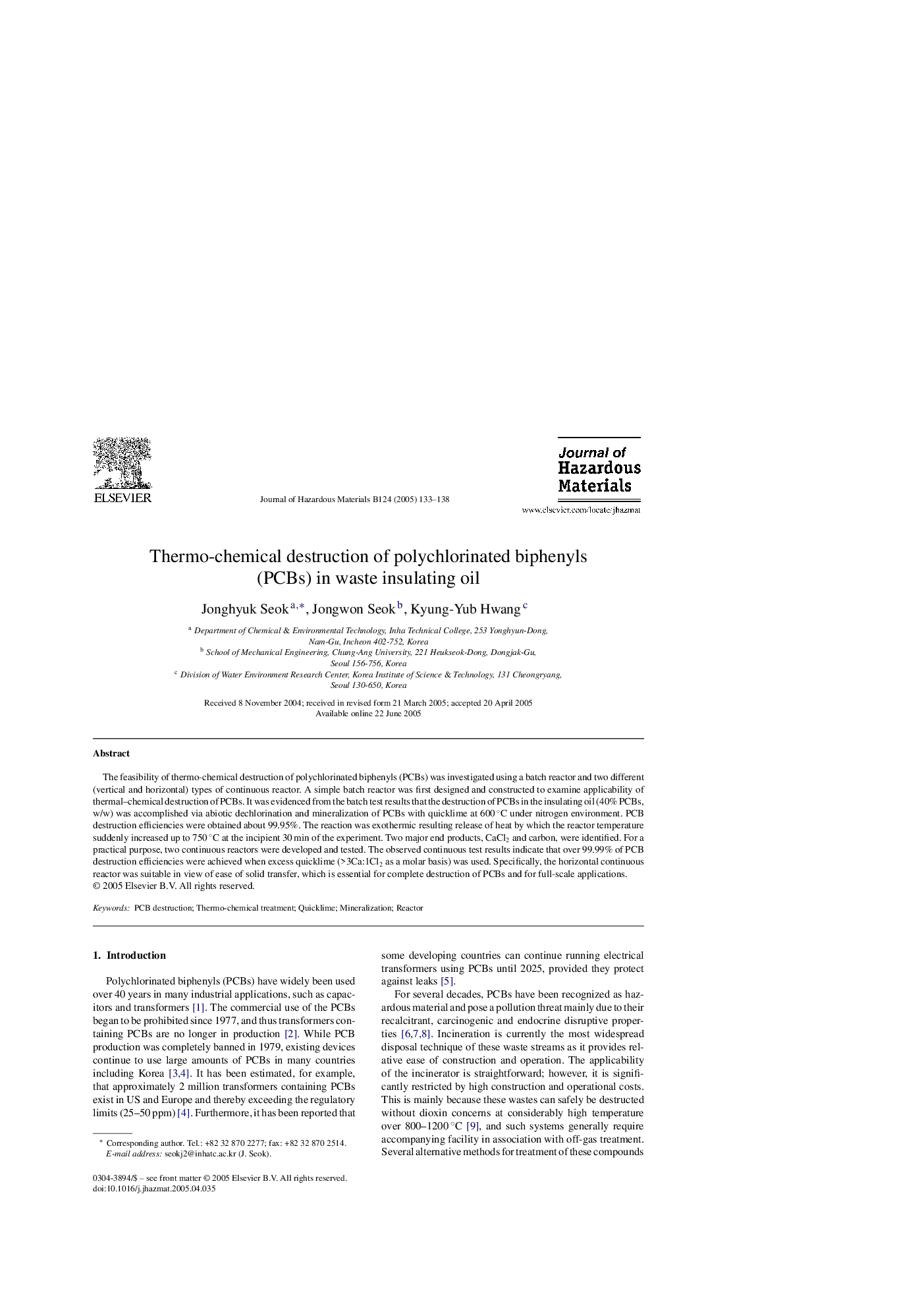| Article ID | Journal | Published Year | Pages | File Type |
|---|---|---|---|---|
| 9674171 | Journal of Hazardous Materials | 2005 | 6 Pages |
Abstract
The feasibility of thermo-chemical destruction of polychlorinated biphenyls (PCBs) was investigated using a batch reactor and two different (vertical and horizontal) types of continuous reactor. A simple batch reactor was first designed and constructed to examine applicability of thermal-chemical destruction of PCBs. It was evidenced from the batch test results that the destruction of PCBs in the insulating oil (40% PCBs, w/w) was accomplished via abiotic dechlorination and mineralization of PCBs with quicklime at 600 °C under nitrogen environment. PCB destruction efficiencies were obtained about 99.95%. The reaction was exothermic resulting release of heat by which the reactor temperature suddenly increased up to 750 °C at the incipient 30 min of the experiment. Two major end products, CaCl2 and carbon, were identified. For a practical purpose, two continuous reactors were developed and tested. The observed continuous test results indicate that over 99.99% of PCB destruction efficiencies were achieved when excess quicklime (>3Ca:1Cl2 as a molar basis) was used. Specifically, the horizontal continuous reactor was suitable in view of ease of solid transfer, which is essential for complete destruction of PCBs and for full-scale applications.
Related Topics
Physical Sciences and Engineering
Chemical Engineering
Chemical Health and Safety
Authors
Jonghyuk Seok, Jongwon Seok, Kyung-Yub Hwang,
